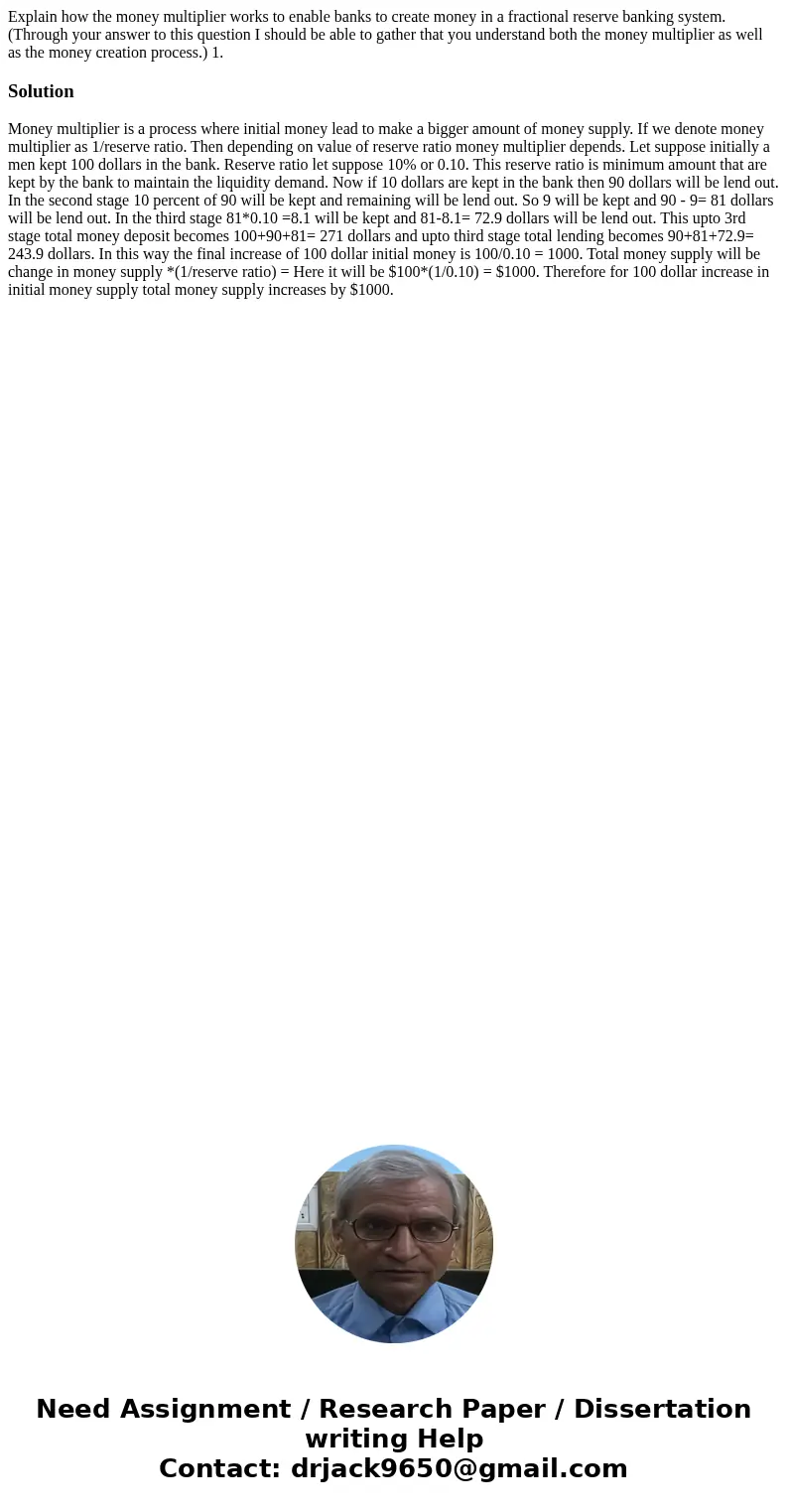Explain how the money multiplier works to enable banks to cr
Solution
Money multiplier is a process where initial money lead to make a bigger amount of money supply. If we denote money multiplier as 1/reserve ratio. Then depending on value of reserve ratio money multiplier depends. Let suppose initially a men kept 100 dollars in the bank. Reserve ratio let suppose 10% or 0.10. This reserve ratio is minimum amount that are kept by the bank to maintain the liquidity demand. Now if 10 dollars are kept in the bank then 90 dollars will be lend out. In the second stage 10 percent of 90 will be kept and remaining will be lend out. So 9 will be kept and 90 - 9= 81 dollars will be lend out. In the third stage 81*0.10 =8.1 will be kept and 81-8.1= 72.9 dollars will be lend out. This upto 3rd stage total money deposit becomes 100+90+81= 271 dollars and upto third stage total lending becomes 90+81+72.9= 243.9 dollars. In this way the final increase of 100 dollar initial money is 100/0.10 = 1000. Total money supply will be change in money supply *(1/reserve ratio) = Here it will be $100*(1/0.10) = $1000. Therefore for 100 dollar increase in initial money supply total money supply increases by $1000.

 Homework Sourse
Homework Sourse